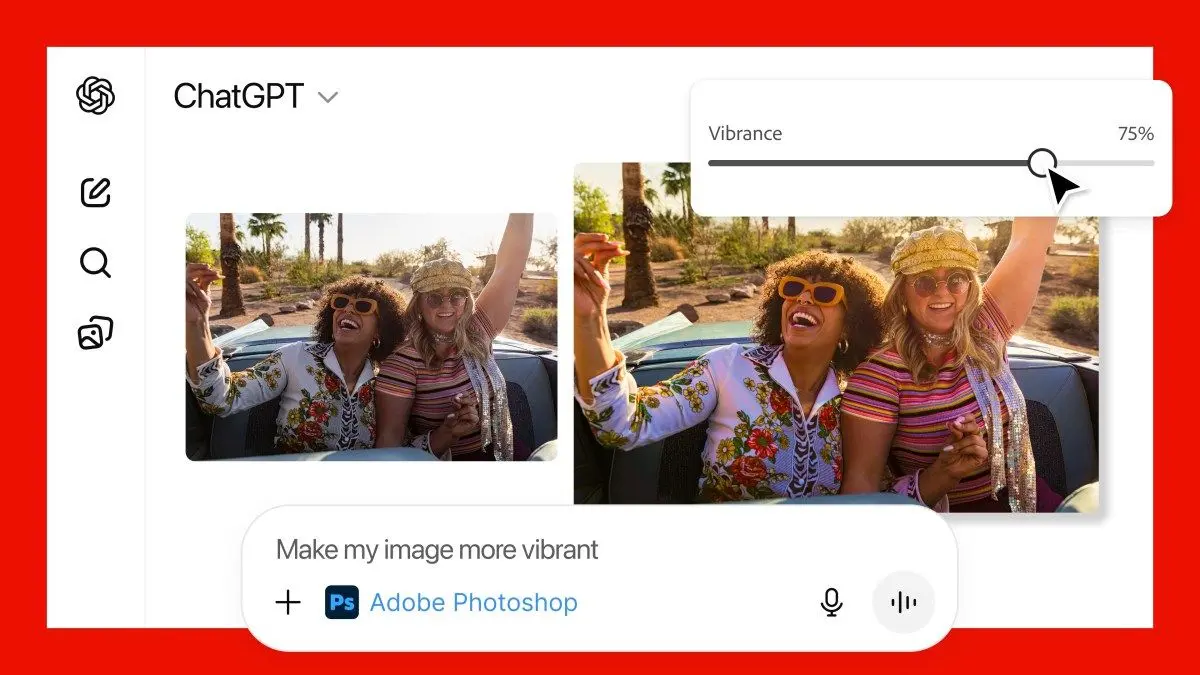Novel Solar Cell-Based Device Revolutionizes Edge AI Processing with Human-Like Synaptic Behavior
2 Sources
2 Sources
[1]
The future of edge AI: Dye-sensitized solar cell-based synaptic device
Artificial intelligence (AI) is becoming increasingly useful for the prediction of emergency events such as heart attacks, natural disasters, and pipeline failures. This requires state-of-the-art technologies that can rapidly process data. In this regard, reservoir computing, specially designed for time-series data processing with low power consumption, is a promising option. It can be implemented in various frameworks, among which physical reservoir computing (PRC) is the most popular. PRC with optoelectronic artificial synapses (junction structures that permit a nerve cell to transmit an electrical or chemical signal to another cell) that mimic human synaptic elements are expected to have unparalleled recognition and real-time processing capabilities akin to the human visual system. However, PRC based on existing self-powered optoelectronic synaptic devices cannot handle time-series data across multiple timescales, present in signals for monitoring infrastructure, natural environment, and health conditions. In a recent breakthrough, a team of researchers from the Department of Applied Electronics, Graduate School of Advanced Engineering, Tokyo University of Science (TUS), led by Associate Professor Takashi Ikuno and including Mr. Hiroaki Komatsu, and Ms. Norika Hosoda, has successfully fabricated a self-powered dye-sensitized solar cell-based optoelectronic photopolymeric human synapse with a time constant that can be controlled by the input light intensity. Their study was published online on October 28, 2024, in the journal ACS Applied Materials & Interfaces. Dr. Ikuno explains the motivation behind their research: "In order to process time-series input optical data with various time scales, it is essential to fabricate devices according to the desired time scale. Inspired by the afterimage phenomenon of the eye, we came up with a novel optoelectronic human synaptic device that can serve as a computational framework for power-saving edge AI optical sensors." The solar cell-based device utilizes squarylium derivative-based dyes and incorporates optical input, AI computation, analog output, and power supply functions in the device itself at the material level. It exhibits synaptic plasticity in response to light intensity, showing synaptic features such as paired-pulse facilitation and paired-pulse depression. The researchers demonstrated that adjusting the light intensity results in high computational performance in time-series data processing tasks, irrespective of the input light pulse width. Furthermore, when this device was used as the reservoir layer of PRC, it classified human movements such as bending, jumping, running, and walking with more than 90% accuracy. Additionally, the power consumption was just 1% of that required by conventional systems, which would also significantly reduce the associated carbon emissions. "We have demonstrated for the first time in the world that the developed device can operate with very low power consumption and yet identify human motion with a high accuracy rate," emphasizes Dr. Ikuno. Notably, the proposed device opens a new path toward the realization of edge AI sensors for various time scales, with applications in surveillance cameras, car cameras, and health monitoring. According to Dr. Ikuno, "This invention can be used as a massively popular edge AI optical sensor that can be attached to any object or person, and can impact the cost involved in power consumption, such as car-mounted cameras and car-mounted computers." He adds, "This device can function as a sensor that can identify human movement with low power consumption, and thus has the potential to contribute to the improvement of vehicle power consumption. Furthermore, it is expected to be used as a low power consumption optical sensor in stand-alone smartwatches and medical devices, significantly reducing their costs to be comparable or even lower than that of current medical devices." To conclude, this novel solar cell-based device has the potential to accelerate the development of energy-efficient edge AI sensors with varied applications.
[2]
Novel physical reservoir computing device mimics human synaptic behavior for efficient edge AI processing
Artificial intelligence (AI) is becoming increasingly useful for the prediction of emergency events such as heart attacks, natural disasters, and pipeline failures. This requires state-of-the-art technologies that can rapidly process data. In this regard, reservoir computing, specially designed for time-series data processing with low power consumption, is a promising option. It can be implemented in various frameworks, among which physical reservoir computing (PRC) is the most popular. PRC with optoelectronic artificial synapses (junction structures that permit a nerve cell to transmit an electrical or chemical signal to another cell) that mimic human synaptic elements are expected to have unparalleled recognition and real-time processing capabilities akin to the human visual system. However, PRC based on existing self-powered optoelectronic synaptic devices cannot handle time-series data across multiple timescales, present in signals for monitoring infrastructure, natural environment, and health conditions. A team of researchers from the Department of Applied Electronics, Graduate School of Advanced Engineering, Tokyo University of Science (TUS), led by Associate Professor Takashi Ikuno and including Mr. Hiroaki Komatsu, and Ms. Norika Hosoda, has successfully fabricated a self-powered dye-sensitized solar cell-based optoelectronic photopolymeric human synapse with a time constant that can be controlled by the input light intensity. Their study was published online on October 28, 2024, in the journal ACS Applied Materials & Interfaces. Dr. Ikuno explains, "In order to process time-series input optical data with various time scales, it is essential to fabricate devices according to the desired time scale. Inspired by the afterimage phenomenon of the eye, we came up with a novel optoelectronic human synaptic device that can serve as a computational framework for power-saving edge AI optical sensors." The solar cell-based device utilizes squarylium derivative-based dyes and incorporates optical input, AI computation, analog output, and power supply functions in the device itself at the material level. It exhibits synaptic plasticity in response to light intensity, showing synaptic features such as paired-pulse facilitation and paired-pulse depression. The researchers demonstrated that adjusting the light intensity results in high computational performance in time-series data processing tasks, irrespective of the input light pulse width. Furthermore, when this device was used as the reservoir layer of PRC, it classified human movements such as bending, jumping, running, and walking with more than 90% accuracy. Additionally, the power consumption was just 1% of that required by conventional systems, which would also significantly reduce the associated carbon emissions. "We have demonstrated for the first time in the world that the developed device can operate with very low power consumption and yet identify human motion with a high accuracy rate," says Dr. Ikuno. Notably, the proposed device opens a new path toward the realization of edge AI sensors for various time scales, with applications in surveillance cameras, car cameras, and health monitoring. According to Dr. Ikuno, "This invention can be used as a massively popular edge AI optical sensor that can be attached to any object or person, and can impact the cost involved in power consumption, such as car-mounted cameras and car-mounted computers." He adds, "This device can function as a sensor that can identify human movement with low power consumption, and thus has the potential to contribute to the improvement of vehicle power consumption. "Furthermore, it is expected to be used as a low power consumption optical sensor in stand-alone smartwatches and medical devices, significantly reducing their costs to be comparable or even lower than that of current medical devices." To conclude, this novel solar cell-based device has the potential to accelerate the development of energy-efficient edge AI sensors with varied applications.
Share
Share
Copy Link
Researchers at Tokyo University of Science have developed a groundbreaking dye-sensitized solar cell-based device that mimics human synaptic behavior, offering efficient edge AI processing for various applications while consuming significantly less power.

Breakthrough in Edge AI Technology
Researchers from Tokyo University of Science have made a significant advancement in edge AI technology by developing a novel dye-sensitized solar cell-based device that mimics human synaptic behavior. This breakthrough, published in ACS Applied Materials & Interfaces on October 28, 2024, promises to revolutionize the field of physical reservoir computing (PRC) and edge AI processing
1
2
.Innovative Design and Functionality
The device, created by a team led by Associate Professor Takashi Ikuno, incorporates optical input, AI computation, analog output, and power supply functions at the material level. It utilizes squarylium derivative-based dyes and exhibits synaptic plasticity in response to light intensity, demonstrating features such as paired-pulse facilitation and paired-pulse depression
1
.Dr. Ikuno explains, "Inspired by the afterimage phenomenon of the eye, we came up with a novel optoelectronic human synaptic device that can serve as a computational framework for power-saving edge AI optical sensors"
2
.Impressive Performance and Efficiency
When used as the reservoir layer of PRC, the device showcased remarkable capabilities:
- Classified human movements (bending, jumping, running, walking) with over 90% accuracy
- Consumed only 1% of the power required by conventional systems
- Demonstrated high computational performance in time-series data processing tasks, regardless of input light pulse width
1
2
Wide-Ranging Applications
The innovative device opens new possibilities for edge AI sensors across various time scales and applications:
- Surveillance cameras
- Car-mounted cameras and computers
- Health monitoring devices
- Standalone smartwatches
- Medical devices
1
2
Dr. Ikuno highlights, "This invention can be used as a massively popular edge AI optical sensor that can be attached to any object or person, and can impact the cost involved in power consumption"
2
.Related Stories
Environmental and Economic Impact
The device's low power consumption not only reduces operational costs but also significantly decreases associated carbon emissions. This advancement could lead to more affordable and energy-efficient AI-powered devices, particularly in the automotive and healthcare sectors
1
2
.Future Prospects
This solar cell-based device represents a major step forward in the development of energy-efficient edge AI sensors. Its ability to process time-series data across multiple timescales addresses a critical limitation of existing self-powered optoelectronic synaptic devices
1
2
.As the technology matures, it has the potential to accelerate the adoption of AI in various fields, offering real-time processing capabilities akin to the human visual system while maintaining extremely low power consumption.
References
Summarized by
Navi
Related Stories
Self-Powered Artificial Synapse Mimics Human Color Vision for Edge AI Devices
03 Jun 2025•Science and Research

Novel Magnetic RAM Architecture Paves Way for AI in IoT Edge Devices
29 Oct 2024•Technology

Breakthrough in Neuromorphic Computing: Single Silicon Transistor Mimics Neuron and Synapse
29 Mar 2025•Technology

Recent Highlights
1
AI Chatbots Sway Voters More Effectively Than Traditional Political Ads, New Studies Reveal
Science and Research

2
Google AI glasses set to launch in 2026 with Gemini and Android XR across multiple partners
Technology

3
EU Launches Antitrust Probe Into Google's AI Training Practices and Content Usage
Policy and Regulation




